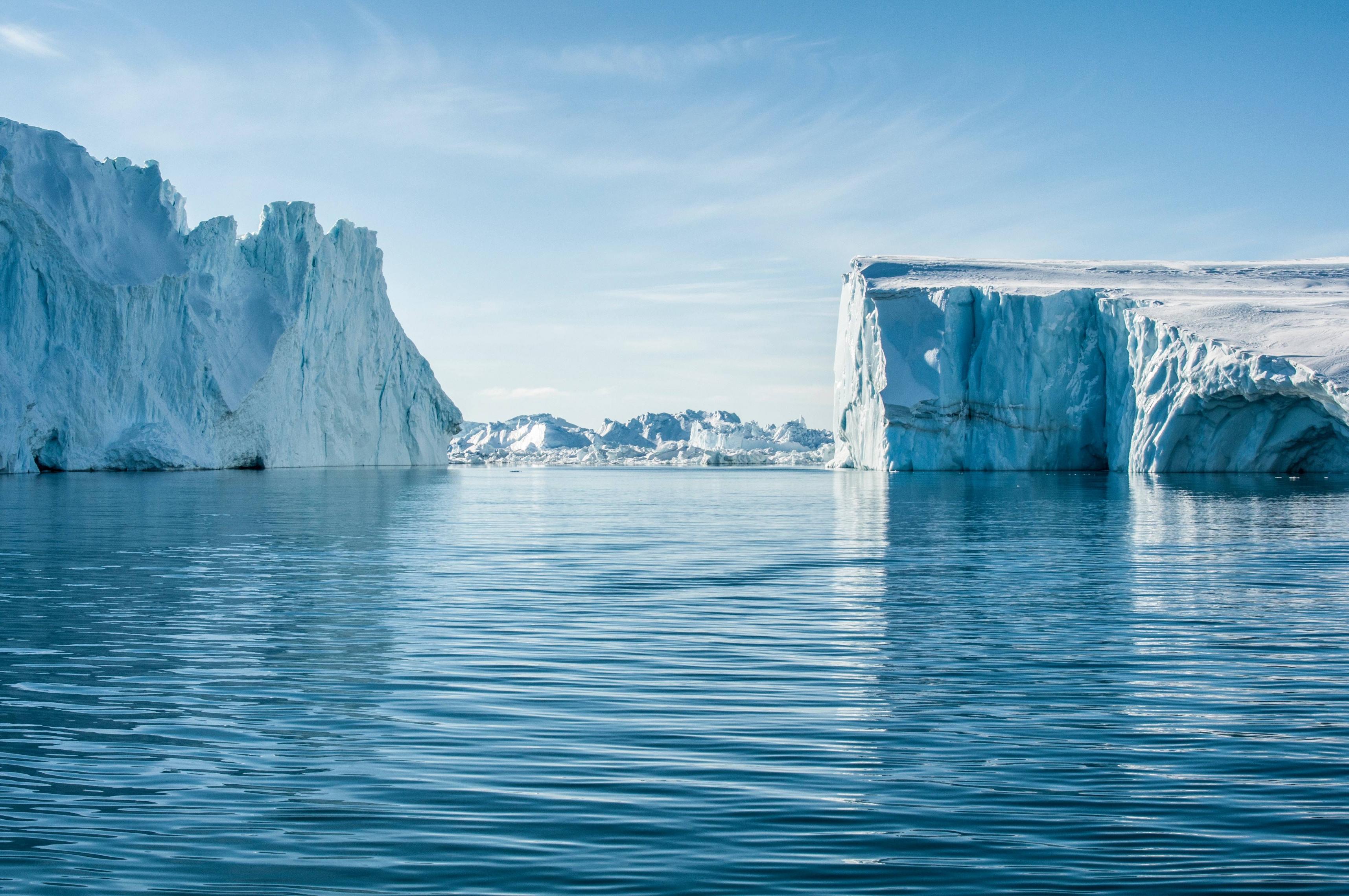
Climate change solutions are urgently needed. Cities, states and countries all over the world are taking steps to combat climate changes. Many advocate for the use renewable energy sources as well as the reduction of carbon emissions from fossil fuels. Yet, there are still major questions surrounding when and how to implement these solutions.
Both the United Nations and Intergovernmental Panel on Climate Change called for global warming to be limited to 1.5 degrees Celsius by the middle of this century. To avoid dangerous climate change, the IPCC says that half of all emissions cuts must be implemented by 2030. This would mean a reduction of approximately 6 percent annually starting in 2020.

Project Drawdown recently examined the current state and technology of science and found 100 solutions that could reverse world warming within 30 year. These solutions can be grouped into eight different categories depending on the technology. Each solution is then evaluated based on its efficiency. The most cost-effective combinations are chosen.
Transitioning to lower-carbon, zero-carbon energy sources, removing the greenhouse gas emission from the atmosphere, as well as improving carbon capture techniques are some of the most important ways to limit climate change. There are improved approaches that include strategies to restore ecosystems, and biological systems to improve carbon sequestration.
Another area that has the potential to reduce greenhouse gas emissions is agriculture. However, managing agriculture's emissions can be more challenging than in other industries. To reduce agricultural emissions, we should focus on reducing methane as well as nitrous oxide. About 25 percent global greenhouse gas emission is caused by farmers.
To avoid the worst effects from climate change, it is essential to create methods to store carbon dioxide and to capture it. There are many options, including direct carbon capture and carbon emissions from industrial facilities. These are great tools for reducing carbon dioxide emissions, but they do not stop the release.

Effectively combating climate change requires that governments work together to make significant financial investment. They also have the responsibility to modify their policies. One way to accomplish this is to eliminate subsidies for fossil fuels. It's important to provide incentives for companies to move to cleaner and smarter energy sources, rather than just spending the money.
Some cities like Seattle have taken actions to reduce their negative impact on the climate. Some have developed systems that help communities adapt in a changing environment. Adaptation is about protecting people's lives, livelihoods and infrastructure as well as natural systems.
There are many innovative solutions needed for climate change. The solutions must be efficient and timely. If governments and communities are unwilling or unable to commit to solutions, individual citizens should consider making a difference by purchasing appliances that are more energy efficient and replacing outdated home setups. Also, individuals should encourage their friends and family to adopt a more plant-based diet.
Despite the challenges associated with addressing climate change, the world can move forward towards a better future. We can mitigate the impacts of climate change if individuals, communities, and businesses all work together.
FAQ
How can the world work towards a more sustainable future when faced with the challenges of climate change?
Sustainability means being able to provide for current needs and not compromise future generations' ability. An urgent need exists to act to eliminate our dependency on finite natural resources and to shift towards a more sustainable method of using them.
It is crucial that we reexamine our consumption and production patterns, as well our dependence on fossil fuels, in order to move towards a sustainable future. We need to find new technologies, renewable energy sources, and systems that can reduce harmful emissions and still meet our daily needs.
In addition, it is essential that we adopt an integrated approach when looking at sustainability. This involves considering all aspects of production from materials used, waste management and reuse strategies to energy use in transportation and industry. There are many potential solutions available including the utilization renewable energies like sun, wind, and water power; improved waste management systems; higher efficiency in agriculture; improved transport network; green building regulations; sustainable urban planning initiatives.
We need behavioral changes to reach this goal across society. Education programs are essential to assist people in understanding the impacts of climate change. They can also help them understand how they can contribute positively to a more sustainable planet through micro-actions like reducing food waste and adopting low-carbon lifestyles.
We can only make significant progress in creating sustainable environments for the future by working together with industry leaders, citizens, and governments.
What are the causes for climate change
Climate change is a global phenomenon. It has been caused by an increase in greenhouse gases that are emitted from humans. These greenhouse gases trap more heat from the sun, which causes global warming.
Climate change can also be caused by population growth, land clearing, destruction of ecosystems and energy consumption, over-grazing, and deforestation. This further decreases the number natural carbon sinks that absorb CO2 in the atmosphere. Climate change can also come from natural forces, such as changes in solar energy.
These human activities combined result in Earth being unable to adequately balance its energy resources, which has led to an average global temperature increase of 1 degree Celsius from pre-industrial times. Glaciers melt quicker than they form, and sea levels rise because oceans absorb most the heat energy. Other negative consequences include water scarcity, droughts and extreme weather events like flooding and hurricanes.
To avoid further damage, it is crucial that we reduce carbon emissions and take steps to curb our emissions. This will give us a fighting chance against climate change's already serious impacts. It is crucial to reduce our dependence of fossil fuels for electricity generation and invest in renewable sources, such as wind turbines/solar panels. These do not emit any harmful chemicals into the environment. These delicate planetary cycles are also susceptible to other sustainable practices, like reforestation.
What is the potential for new technologies to address climate change?
This global problem is a huge challenge that new technologies can address. We can now transition to a more sustainable tomorrow by utilizing renewable energy sources such as solar, wind and geothermal, as well energy storage systems like thermal tanks or battery packs.
New methods for carbon capture or sequestration can be used to lower greenhouse gases. Additionally, improved agricultural practices can reduce the emissions of livestock and soil erosion. Smart grid technology is also possible to be integrated into existing power infrastructure, resulting in an efficiency boost. Furthermore, improved building design can help decrease energy consumption.
Additionally, scientists can develop organisms using cutting-edge synthetic biological approaches to convert green sources of fuel like CO2 lasers into usable biofuels or alternate feedstocks. If the market shifts away from petrol-based cars to zero-emission electric vehicles powered by clean sources, this could transform transportation.
Finally, investing in digital technology and AI will help people from all over the world gain access to information about their environmental footprint and make informed decisions about how they consume. Understanding how we contribute to the carbon production of our planet is key for better stewardship.
Climate change: What is it and how can it happen?
Climate change refers to the long-term shifts in global weather patterns that are caused by an increase in greenhouse gases in the atmosphere. These gases trap heat which causes global temperatures to rise. This can cause a wide range of changes in weather conditions and climate. These include rising sea levels and melting glaciers, severe storms and droughts as well as widespread coral reef bleaching and species extinction.
Climate change is caused primarily by human activity. These include burning fossil fuels, transporting electricity, cutting down trees, and farming livestock. When these activities release massive amounts of carbon dioxide (CO2) into the atmosphere it warms the planet at a much faster rate than natural processes like volcanic eruptions as these activities produce many times more emissions than volcanoes.
Global greenhouse gas emissions are also influenced by deforestation, which contributes about 15-20%. When trees are cut down or burned it releases their stored carbon dioxide back into the atmosphere. Additionally, forests act a natural carbon source that absorbs CO2 into the atmosphere. Without this capacity, carbon dioxide levels in the atmosphere will continue to rise with devastating effects for ecosystems around world.
In addition to releasing CO2 into the atmosphere, human-caused pollution also emits other harmful gasses such as methane (CH4) and nitrous oxide (N2O). Methane has been extensively employed in industrial processes. It contributes significantly to the atmosphere's warming. While N2O can be emitted primarily by agricultural soil management activities, such as tilling or fertilization which release excess nitrogen to soil.
Humanity must work together across all levels of society, economy, and politics to reduce greenhouse gas emissions. We need to shift from dependence on fossil fuels and towards renewable energy sources like solar, wind, and low-carbon hydrogen fuels in order to limit climate change. The smart solution to reduce CO2 accumulation and atmospheric pollution could be replacing polluting fossil energy sources with zero-waste solutions. It is possible to reduce our environmental footprint by taking responsibility. Conservation measures such as reforestation can help protect biodiversity and absorb large amounts of CO2 into the environment. This will be a powerful tool in helping to solve the climate crisis and restore balance for future generations.
What role can the energy sector play in climate changes?
The importance of the energy industry in climate change mitigation is enormous. The main source of global warming comes from the burning of fossil energy. It releases carbon dioxide in the atmosphere, traps heat, and results in an increase on Earth's average temperature.
To address this, energy sources must move away from carbon-emitting sources, such as coal and natural gas, and instead transition towards renewable energy sources like solar, wind, and geothermal. This shift can be implemented not only through government policy and incentives but also through investments in innovative technology such as hydrogen fuel cells. Businesses and households will be able to reduce their carbon emissions and lower their electricity bills if they invest in infrastructure that supports renewable sources.
Another option is to move away from polluting transport options such as petroleum-fueled vehicles and towards electric cars or public transport. The government has great power to help societies transition away from oil-based infrastructures. They can support research into battery technology and encourage consumers to invest in cleaner modes.
Additionally, companies must implement green business practices within their operations to reduce overall carbon footprints by implementing better insulation systems for offices or implementing energy efficiency plans for production facilities. This can drastically reduce operational expenses while also improving environmental performance metrics.
To be effective, these initiatives need to be supported at both the company and government levels. For example, increasing taxes on polluting products encourages people to change their ways without making them more financially competitive with polluters. Providing vouchers or subsidies to low-carbon products will help create a market that supports sustainability efforts. This is why tackling climate changes requires both private industry as well as private citizens to make a difference. By switching to green energy and adopting environmentally friendly practices, we can help to ensure that the future generations of people are affected positively.
What is the impact of climate change on biodiversity and ecosystems?
Climate change can have many impacts on biodiversity and ecosystems. Rising temperatures, changes in extreme weather events and sea levels, as well as increased acidity in the ocean are just some of the issues affecting wildlife and ecosystems today.
These changes can result in shifts of habitat areas, disrupting food chains or affecting population numbers or distributions. With potentially devastating consequences for biodiversity, ecosystems and their functioning, these shifts in climate conditions could cause significant impacts. Changes in the hydrological cycles can also have an impact on water availability for species that live in aquatic environments.
Climate changes can lead to higher temperatures and more frequent extremes (such as droughts) which put more stress on already fragile systems, like coral reefs or tropical forests. Climate change could lead to the extermination of up to 30% of animal species by 2050. This would cause further ecological community losses.
Climate change is a serious threat to biodiversity as well as human societies that rely on functioning ecosystems for food and fresh water. It is essential to mitigate its effects at all levels. Future damages must be avoided by careful management.
Statistics
- features Earth's average surface temperature in 2022 tied with 2015 as the fifth warmest on record, according to an analysis by NASA. (climate.nasa.gov)
- This source accounts for about 10% of all the water that enters this highly productive farmland, including rivers and rain. (climate.nasa.gov)
- According to the 2014 report on Climate Change Impacts, Adaptation, and Vulnerability (page 8) from the United Nations Intergovernmental Panel on Climate Change, governments at various levels are also getting better at adaptation. (climate.nasa.gov)
- Fossil fuel production must decline by roughly 6 percent per year between 2020 and 2030. (un.org)
- The 100 least-emitting countries generate 3 per cent of total emissions. (un.org)
External Links
How To
How to Reduce Your Carbon Footprint and Fight Climate Change
There are many actions you can take in order to reduce your carbon emissions and fight climate change. First, you can reduce your energy consumption by purchasing energy-efficient appliances, lighting and insulation. You can also save energy by unplugging electronics when not in use, using public transit, walking rather than driving, and turning down the temperature on your thermostat in the winter and summer months.
Second, recycle as much material as possible. Compost food scraps rather than throwing them away. This will ensure that they don't end-up in landfills which release methane gas into our atmosphere. Third, you can plant trees around the house to provide shade and natural cooling. Vegetation absorbs carbon dioxide in the air. Finally, consider purchasing products with minimal packaging or sustainable labelings such as organic cotton or FSC-certified wood which means it's been sustainably managed over time to ensure forest health.
You can help reduce your personal emissions by supporting organizations such as Emissions Reduction Alberta, Climate Change Solutions; The Pembina Institute and The Nature Conservancy Canada. These organizations work to lower emissions through clean energy investments. They also support international initiatives such ICLEI – Local Governments for Sustainability's Urban Sustainability Strategies program.
Everyday changes can be made to help fight climate change.